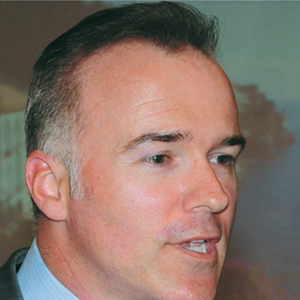
FRONT OF THE ROOM – Brian Lange
Resist the urge to fix things in your first response
 Similar to professional selling, trainers often also encounter a form of “objections” — but from learners, not customers. I must admit at the start, I loathe that the word “objection” has arisen in sales to describe a customer’s concerns, fears or disconnect with a proposed solution.
Similar to professional selling, trainers often also encounter a form of “objections” — but from learners, not customers. I must admit at the start, I loathe that the word “objection” has arisen in sales to describe a customer’s concerns, fears or disconnect with a proposed solution.
Worse still – the phrase used in sales training is that we must overcome the objection. Geesh. Why not work to understand and explore the concerns or doubts? “Overcome” – to me – insinuates an adversarial situation, one in which I must win against the other, who has now become an obstacle in my path toward selling them something.
In training, when you face a learner viewpoint or belief that differs from your own or challenges the content you’ve been delivering, you would do well to consider not trying to fix or resolve it (much less overcome it!) in your first response. Rather, focus on your intention of accepting their concern (because it is true for them at that moment!) and try to help the learner feel heard:
“And so for you – at this point in our time together – you’ve got a real concern about how this may be received in the field…”
The problem with attempting to fix or resolve the issue in our first response is simply that we are usually guessing at what the other needs from us. Advice? Pep talk? Info? We often guess wrong.
Taking Ownership
When we follow the path of answering for ourselves what another person needs from us, quite often the other tells us — via an eventual question — what they need: advice, information or something else. When this happens (“What are some options for how to handle this situation?”) we say they now have ownership (skin in the game) for wanting to hear what you have to share with them.
In some cases, however, the learner doesn’t get around to telling you what they need from you — they may just vent or put an opinion or concern out there. In these instances, you very well might have information or ideas you want them to consider related to the issue.
A word of caution: Beware of transition phrases such as:
- “Yes, but…”
- “I see what you mean, however…”
- “In my experience…”
Risks are twofold: You may put them slightly on the defensive if they feel you’re challenging or opposing their original perspective (can become adversarial under the radar!), and if they don’t yet have true “ownership” in wanting to — or being ready to – hear what you have to say. So, before weighing in with your perspective(s), consider a strategy of “getting hired” (confirming ownership) by the other.
On Board
A “Hiring Statement” has three components: credibility, hook and the ask. First, establish that you know something about the issue at hand (“I read a book where…”; “I faced a similar situation myself…”; “I’ve seen people handle this in a variety of ways…”). This shows you have some credibility to be discussing it. It’s really a warmer, of sorts.
Second, sell a “hook” with some compelling, tempting nugget (“I learned three key lessons that may influence how you see this…”; “I’m aware of two factors that shaped this decision…”) that does not yet give the “meat” of the info you want to share. You’re creating a hook.
And last, complete the ask: “Would it be helpful if I shared this with you?” or any similar question that compels the other to respond with a yes or no. They may not care about or be ready for your input yet.
Of course, the ultimate hiring statement is simply the question “How can I help?” It ensures collaboration in determining the potential solution (and it’s also helpful when you feel you have a variety of potential solutions and want to whittle them down a bit!). Once you do begin to share your perspective(s), think of it as providing information to consider — not trying to sell them on your counsel or advocate for a part +Ads +Images .icular solution.
Conclusion
Leaving arms-length room for learners to weigh your input and think about their course of action is far more influential than trying to coax or push them toward your proposed solution. Use of “may,” “might” and “could” in your language will help give space to the other to assess and digest.
Aristotle reminds us that, “Influence works best when others decide for themselves!” Consider not putting the pressure on yourself to “solve” learner concerns in your first response. Think of it as an opportunity to spark the other to say more.
 Brian Lange is with Perim Consulting and serves as lead facilitator for LTEN PrimeTime! For Trainers Core and Masters Workshops. Email Brian at blange@perim.com or connect with him on LinkedIn at www.linkedin.com/in/brianplange.
Brian Lange is with Perim Consulting and serves as lead facilitator for LTEN PrimeTime! For Trainers Core and Masters Workshops. Email Brian at blange@perim.com or connect with him on LinkedIn at www.linkedin.com/in/brianplange.








